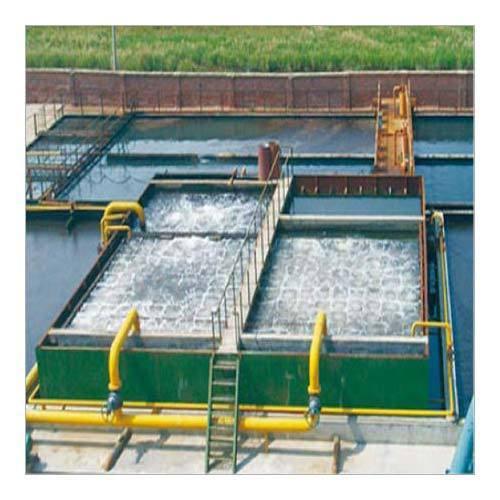Why Choose MBBR Technology to Optimize Your Sewage Treatment Process

In both municipal and industrial settings, dealing with the organic matter in wastewater can be difficult. As regulations for treated wastewater become more and more stringent, municipalities and commercial/industrial organizations are looking for technology that can meet environmental demands. For organic materials, one of the most effective methods of treatment is integrating a biological sewage treatment process. Of course, many cities, towns, communities, and companies already have such a process in place for treating their wastewater. However, many of these systems, especially those that have been in place for some time, can be optimized to improve treatment efficiency and lower operating costs.
One of the easiest and most effective ways to optimize existing biological systems is intregrating a moving bed biofilm reactor process (MBBR). These systems take aspects of two other treatment systems to utilize their advantages without their disadvantages. One such system is the tried and true activated sludge process (ASP), and the other is a trickling filter. MBBR takes the idea of a suspended media from ASP, while also pulling from the fixed film aspect of trickling filters.
Therefore, why exactly should you choose an MBBR treatment process to optimize your current biological sewage treatment system?
Optimizing existing systems can be difficult and potentially costly if you are implementing a new unit. Space needs to be made, lines rerouted, appropriate materials acquired. MBBR systems, on the other hand, can make such changes easier and less costly. Units are more compact than most other treatment systems, thanks to the high surface area and low volume specialized biofilm carriers that are used. They can be easily retrofitted into current ASP processes with straight-forward operation. Also, they typically don’t require any chemical additives and the media and biofilm can last for years, nearly a decade or more, without requiring replacement.
Yet another reason for their easier implementation, is the fact that this technology does not require recirculation lines.
This is one of the benefits of MBBR fixed film systems. Recirculation requires extra piping and additional pumps and energy, therefore, there are no extra costs associated with these additional recirculation processes.
Processes that require recirculation also typically produce more sludge in the clarifying step, more sludge that will need to be disposed of. This also means that the overall efficiency of the reactor is not dependent on how well the effluent settles. There is also the possibility of improving the efficiency of sludge recycling processes.
MBBR systems improve the characteristics of sludge settling in the clarifier and the sludge settles better as well.
The moving bed biofilm technology also has improved retention times when compared to other biological sewage treatment processes.
The concept of retention times is a double-edged sword when it comes to biological sewage treatment. On the one hand, you have hydraulic retention time (HRT), which is the amount of time the effluent is subjected to the treatment process. On the other hand, you have sludge/solids retention time (SRT), which is the amount of time a unit of sludge/solids are held within the reactor and able to metabolize organic materials.
Using MBBR, these times are lower and higher than other processes respectively. Shorter HRT is thanks to the high surface area contact and bacterial concentration of the biofilm on the media carriers. The longer SRT is due to the fact that the biofilm is grown attached to a surface, meaning it can’t leave the reactor like suspended solid processes. Therefore, an MBBR unit can be added to optimize a sewage treatment system without sacrificing too much extra time or solids based on the configuration of the existing treatment system.
So, if your current system isn’t operating at peak conditions, it may be a cost efficient and prudent decision to integrate an MBBR process to meet treatment standards.
This sewage treatment technology process can be added before an activated sludge tank to pick up the slack and remove the BOD and TSS that your activated sludge process is missing. Or it can be integrated into a new or updated municipal or commercial/industrial sewage treatment system.
A compact, modular MBBR unit can be quickly and easily implemented without the need for excess construction costs. Once it is installed, there is very little that needs to be done in the way of operation and maintenance. Using MBBR may be a great way to optimize your current biological sewage treatment process.
Curious how MBBR could optimize your current biological sewage treatment process?
Contact the water & wastewater treatment specialists at Genesis Water Technologies today to find out more information at 1-877-267-3699 within the US or you can reach us via email at customersupport@genesiswatertech.com for a free initial consultation to discuss your particular application.

